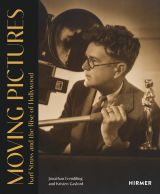Moving Pictures: Karl Struss and the Rise of Hollywood

Moving Pictures examines the Hollywood career of Karl Struss (1886–1981), a pioneering artist of both still and moving images who reached the highest levels of success in both fields. It tells a multimedia story through photographs, films, and archival objects of how he transitioned from an acclaimed fine art photographer to a leading Hollywood cinematographer. The publication focuses on the thirty years between 1919, when Struss first started working in Hollywood, and the late 1940s, when the breakup of the studio system remade Hollywood.
Finally, Moving Pictures will explore Struss’s cinematography in the two decades after Sunrise, an era of seismic changes in the film industry that witnessed the introduction of sound and colour film, the solidification and then breakup of the studio system, and the postwar rise of television. In these years, he earned an additional three Oscar nominations and established collaborative relationships with some of Hollywood’s biggest directors and stars like Charlie Chaplin and Mary Pickford. The publication ends in 1951, when Struss starred as “the cinematographer” in the Academy of Motion Picture Arts and Science’s eponymous short film, a sign that he had become Hollywood’s archetypal cameraman. About the Author Jonathan Frembling is Gentling Curator and Head Archivist at the Amon Carter Museum of American Art (the Carter)
Kristen Gaylord is former Associate Curator of Photographs at the Carter
Luci Marzola is a film and media historian at the USC School of Cinematic Arts
Karen Barber is Visiting Assistant Professor of Art History at the University of Mississippi
John Bailey, ASC, is a cinematographer and former president of the Academy of Motion Picture Arts and Sciences
         
Diskuze
Žádný příspěvek do diskuze. Přidejte svůj názor »
|

















